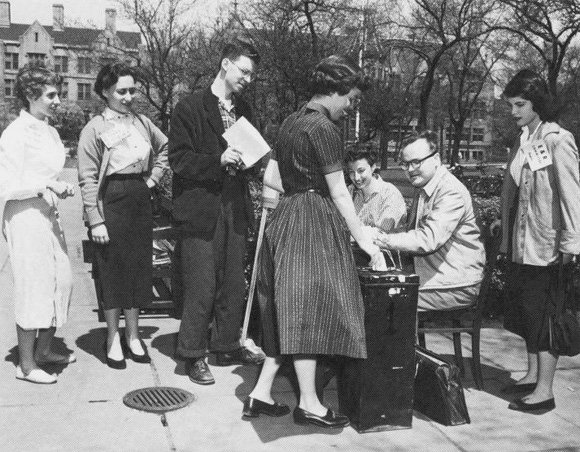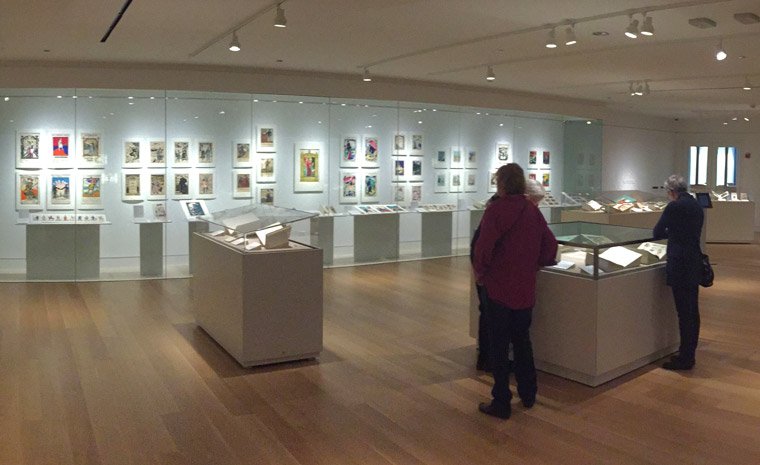Student Organizations
Murray Glenn Harding (PhB 1922) look full advantage of the social opportunities. His academic affiliations included his selection as a student marshal and his membership in the academic honor societies Owl and Serpent, Iron Mask, Score, and the Three-Quarters Club. Harding was also a four-year member of the Dramatic Club and the Alpha Delta Phi fraternity, a three-time track athlete, a one-year participant in the Blackfriars, Glee Club, Honor Commission, Settlement Night, and the Board of Christian Union. In his third year, he served on the Undergraduate Council and was Vice-President of the YMCA, and the next year he was president of both organizations.
Cosmopolitan Club, 1916. Created by Japanese and Chinese students to encourage better understanding among the various minority groups on campus, the Cosmopolitan Club operated its own house on the Midway where Americans, Russians. Japanese, Chinese, and students of other nationalities lived together. The club produced a semi-annual International Night featuring the music and culture of Cosmopolitan members.

Created by Japanese and Chinese students to encourage better understanding among the various minority groups on campus, the Cosmopolitan Club operated its own house on the Midway where Americans, Russians. Japanese, Chinese, and students of other nationalities lived together. The club produced a semi-annual International Night featuring the music and culture of Cosmopolitan members.

Each October students selected their Assembly representatives. The Assembly members (one for every one hundred students) administered Student Government projects and selected the students who constituted the Executive Council of the Government. Photograph by Stephen Lewellyn (AB 1948).
Harding's participation in so many extracurricular activities was more the exception than the rule, but he proved that students had ample opportunity to become involved in student social life. From the start, the University had hoped that, given the chance, students would choose to be socially active. A 1920 survey of undergraduates, however, showed that while interest in organized groups remained strong, only one-third of the students were involved in more than two extracurricular clubs. Why did so many students choose to be relatively inactive? Some simply needed to devote more time to their studies. Many other students discovered that the opportunities to participate in student life were more limited than they appeared. Excluded from membership in many fraternities, some Jewish students responded by forming groups like the Gavel, a debating association, and Campus, a club for the nonfraternity male. For many years, only a handful of African-American students were accepted by campus organizations, and their limited numbers al the University made it difficult for them to form alternative clubs. Many other students, both women and men, working their way through college, helping to support a family or living at home elsewhere in the city, were forced to consider clubs a luxury for the more privileged.
Those with the freedom to participate often avoided the secret societies in favor of an eclectic mixture of organizations. Emit Johnson (AR 1956, AM 1958), Student Government President in 1955, noted that clubs inevitably reflected the current interests of a transitory student body. As a result, he said, "when the demand for an activity ceases, it disappears and is replaced by one more immediate to the campus." The Rifle and Pistol Club, Women's Athletic Association, Rocket Society, Socialist Club, Young Republicans, and the Black Students Alliance are only a few of the many groups students have created to address the changing political, racial, and social concerns of the past century.
Student Government election, 1956. Each October students selected their Assembly representatives. The Assembly members (one for every one hundred students) administered Student Government projects and selected the students who constituted the Executive Council of the Government. Photograph by Stephen Lewellyn (AB 1948).
